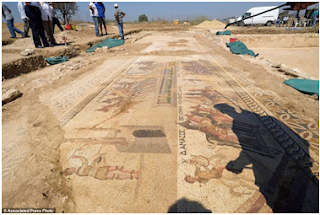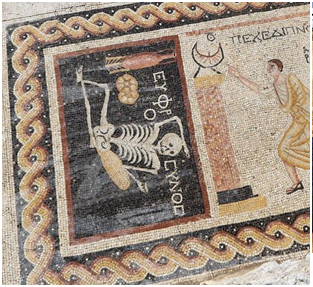The Art of Mosaic Flooring
The latest floor tiles are nothing compared to what ancient civilisations invented because of their artistic workmanship. Yes, we could produce the most beautiful and most complicated designs but it is easy as one-two-print. In olden times, it took days or months before an image emerges on the floor and they need to work directly on the floor. Maybe the labourers during those times were all artists who painstakingly put pebbles and chips of glasses on the floor one at a time to produce a masterpiece.
Today, latest floor tiles have a wide range of variety. You can choose from wood, engineered wood, bamboo, laminate, linoleum, cork, carpet, and vinyl. Conversely, the most prevalent type of flooring in the bygone era is made of mosaic.
Mosaic flooring touched every culture in antiquity like the Greeks and the Romans. Factsanddetails.com defined mosaic as “pictures made from arrangements of small fragments of stone or glass.” It is considered an architectural decoration found in villa reception rooms, dining rooms, and bedrooms.
Surprisingly, these floors are “waterproofed, durable and easy to walk on,” according to senior curator Christine Kondoleonof the Museum of Fine Arts in Boston. However, because mosaic flooring is exquisitely made, you might think twice walking on it or even touching it. How true is this statement? Look at the samples below:
The House of Dionysus
 |
| Image source: amusingplanet.com |
The Ancient City of Zeugma
 |
| Image source: boredpanda.com |
It is worth noting that the ancient Roman and Greek mosaics depict their gods and goddesses; nature and wildlife; and the daily activities at the time.
The Roman Hippodrome Scene
 |
| Image source: dailymail.co.uk |
Greek Mosaic with a Message
 |
| Image source: independent.co.uk |
This is a 2,400-year old flooring discovered in Hatay on the Turkish-Syrian border that shows a lying skeleton with bread and wine. The reckless skeleton, as they dubbed it, also sends a feel-good message written in Greek which translates to “Be cheerful, enjoy your life.”
Ancient Burial Site
 |
| Image source: nationalgeographic.com |
It seems the mosaic fever at the time didn’t just invade houses of old Greeks and Romans. This is one is located in Amphipolis in northern Greece. As described by BBC.com, it is a “3m wide and 4.5m long – depicts a man with a laurel wreath driving a chariot drawn by horses and led by the god Hermes.” Why Hermes? He is not just the messenger of the gods; Hermes “also served as the guide of the souls of the dead to the underworld and the afterlife,” Greekmythology.com defines. Another mystery that needs to be solved is the large gaping hole at its center.
This goes to show that anything could be a canvas and it is the floor for this instance. If only the latest floor tiles are as cool as the mosaic flooring shown above, we could have a personal gallery inside our houses just like what the ancient Romans and Greeks had.












Leave a Comment